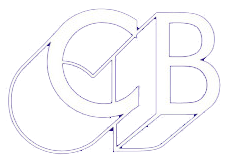The XMon uses a single 15 pin D connector to connect with the monitor controller, the connections includes headphone, unbalanced microphone and digital control and digital metering. We like to supply a suitable cable with the TMC-1 remote so that the customer can immediately connect and use the system. In an ideal world these would all be separate cables with their own connectors but this would make it very untidy at the remote.
Cable 1 - DB15-DB15 overall screen
When we designed the TMC-1 ready made DM15-DM15 cables were available, they were not individually screened but after a resistor change the crosstalk on 5m cables was acceptable. With the 10m extension cable the cross-talk into the headphones from the meter data is annoying.
The supply of the original cable has dried up and we need a new solution. The obvious choice seemed to be to use VGA cables, although not the correct connector these have the advantage that there are 3 screened cables within the cable tha may be used for the unbalanced Headphone and Mic signals.
Cable 2 - Pro Signal VGA cable (cable marking E1199332-T AWM 2919)
Widely available in both Male-Male and Male-Female extension cable format, these cables were specified as having 14 connections + shield, unfortunately when tested there were only 10 connections. The cable still works with X-Mon by leaving out the Midi connections and communicating via RS-422.
Cable 3 - (cable marking AWM Style 2919)
Sourced from our connector supplier this cable has 14 connections - but the grounds of the 3 screened cables are connected in the cable causing a ground loop that resulted in a low frequency noise in the headphone feed.
Cable 4 - (Clever Little Box LPVGA-M/M-5.0M-FP)
The best cable that we have tried so far about 50% more expensive than Cable 2, this cable is blue, more flexible than Cable 2, has 15 connections and nice small 15 way connectors. We tried a 3m cable which it worked well with and without the transformers. The cable is available in lengths of 1,3,5,10, 15 and 20 meters. We plan to stock the 5 meter cable and supply other lengths to order.
We now have the 5m Cables and THEY DO NOT WORK!!!
Daniel had spotted a reference to Icon-Xmon noise issues
http://absolutecad.typepad.com/over_the_wires/tips-tricks/
Reading the article we decided to try using transformers in the audio path using the transformers at one end for ground isolation. For cost and size considerations we used 600ohm telephone transformers . We found a marked improvement in noise levels on all cables, the only worry is the bass performance of such small transformers on the headphone feed.
Conclusion
The next revision of the TMC-1-XMon with have a HD15 VGA connector fitted in place of the DB15 connector and be supplied with a conversion box for the X-Mon connection. The Conversion box will have transformers fitted in the audio path and optional links to swap the digital connections between Midi and RS422. We will supply Cable 4 as an optional extra.













































